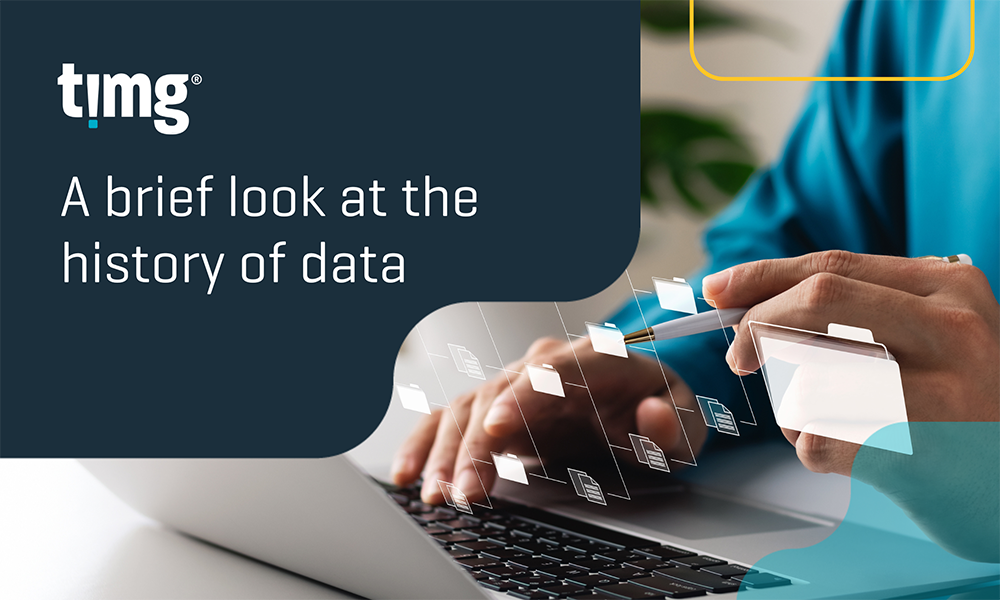Relative to the history of humanity, data as we know it, is a mere flash in the pan.
Looking back over the years, the magnetic drum developed in the early 1930s boasted a maximum data storage capacity around the 60KB mark – considering the latest entry-level iPhone has a minimum of 3,200,0000 KB of memory, we have come a long way quickly. The next quantum leap was from the magnetic drum to the hard drive around the mid-1950, but the unit weighed in at more than a ton and renting it would have cost a monthly 5-digit sum in today’s money.
In practical terms, the floppy disk introduced in the early 1970s provided a way for data to be stored locally and allowed easy data transfer between computers, as networking hadn’t been invented at that stage. The first floppy disk was 8” in size initially, being reduced to 5.25” and then the hard case 3.5” floppy, being the pinnacle of its design, held 1.44MB of data. But you would need more than 22,200 floppies to back up an iPhone of today.
The 1980s heralded the CD-ROM with giddy heights of 700MB of storage capacity. Over the next two decades, CD-ROMs made leaps and bounds in their storage capacity, with the mid-1990s seeing the introduction of the Blu-Ray disk, allowing 50GB of storage. Over the years, hard drive technology has been gaining momentum, and drives have increasing storage capabilities. The IBM PC was released around 1986 and had a hard drive of 10MB; by the mid-1990s, the capacity swiftly became 500MB, 1TB and here in 2023, we expect to see the 50TB hard drive by the end of the year.
With the advancement of storage capacity came the need to develop computer forensics. Microsoft had offered Windows for Workgroups, where PCs were beginning to be joined together in a network. With this came email, work colleagues could send messages to each other without the need to write them by hand or have someone type them from shorthand notes. The file note’s days were numbered.
Computer Forensics became the skill of finding the smoking gun within the Ones and Zeros of the data held on the hard drive. Timelines could easily be built as the PC operating system would date-stamp everything. Invariably email would be the primary source of good material for investigators as users adopted the approach from the word go to write down their innermost secrets and email them to another person or even an email group.
With the sheer volume of computer-generated data in the workplace, computer forensics needed to develop further, and eDiscovery was born. Here the process was to build a ‘haystack’ of data for many investigators to wade through, tag any relevant data and remove duplication of files and emails so only original documents needed to be reviewed.
The early days of eDiscovery saw a requirement for scanning documents and the ability to OCR (Optical Character Recognition) them so their contents could be searchable. eDiscovery has now embraced AI, Artificial Intelligence, with offerings by some software vendors to monitor content in real-time.
With the explosion of data in the workplace came the advent of cloud computing, probably arriving on the stage in a big way around the mid-2000s. It came later than the dotcom boom but was directly related to the explosion of dotcom activity and the resulting eCommerce platforms offered from the World Wide Web (WWW). As the saying went at the time, if you weren’t on the web, you were dead.
The early days of cloud computing saw many providers and since those early days of cloud storage, many providers have since merged or consolidated over time. Many businesses have made their journey to the cloud, with some larger companies seeing the need to have a hybrid model where they keep a small number of critical servers at their office locations. The signs point to increasing cloud activity, with Amazon Web Services announcing a A$13B investment in the next five years for Australian data centres alone. (Bennett, 2023) The Global IT Press is reporting another US$35B investment alone in Virginia, USA, the data centre capital of the world. (Haranas, 2023)
In less than 100 years, we have gone from a rotating magnetic drum that held 0.00019% of what your basic iPhone can save today, to computers monitoring computers, and the next 100 years promises an even more exciting journey.
This sponsored content article represents the views of the sponsor and does not necessarily reflect the views of Queensland Law Society













Share this article